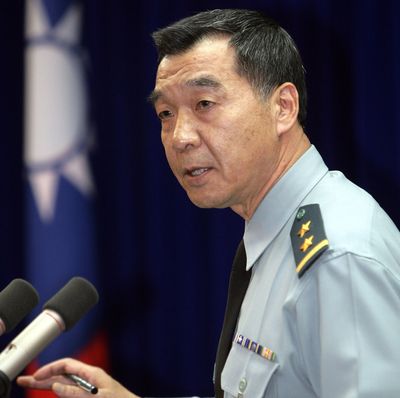The Chinese Communist Party has become too confident in its ability to take decisive action over the status of Taiwan and alter the existing status quo entirely. However, in the face of a reluctant Biden administration, the Japanese government, under Yoshihide Suga, has taken the task of maintaining the regional balance into its own hands and teamed up with Taiwan to keep a check on the Chinese belligerence in the East China Sea.
Senior defence officials in Taiwan were coy about the country’s military collaboration with Japan when quizzed on Monday about satellite imagery showing an apparent joint surveillance operation of a Chinese warship in the East China Sea. Defense Minister Chiu Kuo-cheng told reporters that Taiwan was cooperating with a number of friendly parties but said he could not disclose information about specific departments.

Earlier, the Biden-Suga meeting produced a dramatic result. The two leaders called for “peace and stability across the Taiwan Strait” in a joint statement. The two leaders also expressed “serious concerns regarding the human rights situations” in Hong Kong and Xinjiang. This is the first time since 1969 that the leaders of the two countries mentioned Taiwan in a joint statement. In order to further affirm the commitment against Chinese aggression in the region, Suga said, “We agreed to oppose any attempts to change the status quo by force or coercion in the East and South China seas and intimidation of others in the region.”
The fact that Biden felt compelled to mention Taiwan is a major victory for Japanese diplomacy. Till now, the Biden administration was more or less indifferent in face of Chinese belligerence and military positioning against the country. China was freely bullying it, but Japan ensured that the issue did not die down.
Now satellite images dated May 1, however, revealed an additional detail not present in the announcement by the Japanese Defense Ministry—a Taiwanese warship also appeared to be in the vicinity, seemingly monitoring Binzhou as it returned to the East China Sea. In the same frame, a Taiwanese navy Kee Lung-class destroyer can be seen sailing about 6 miles west of the Chinese and Japanese warships. Taipei’s Apple Daily described it as the first joint surveillance operation between Taiwan and Japan.
Read more: The Japanese Prime Minister came to the US and successfully made Biden follow Trump’s Taiwan policy
Taiwan’s defence officials, however, did not corroborate the newspaper’s view that Taipei and Tokyo had collaborated over the weekend. Defense Minister Chiu said Taiwan dispatches ships and aircraft to monitor any People’s Liberation Army assets operating within designated areas. However, the extent of coordination is something that could not be achieved just by luck.
In a recent report sent to Taiwan’s lawmakers, the Defense Ministry said it was sharing intelligence with the American Institute in Taiwan (AIT)—the de facto U.S. embassy in Taipei—regarding Chinese navy movements in the Western Pacific and in the South China Sea. Asked whether the ministry had shared Saturday’s operations report with the AIT, Chiu said he was “not at liberty” to name specific departments.








